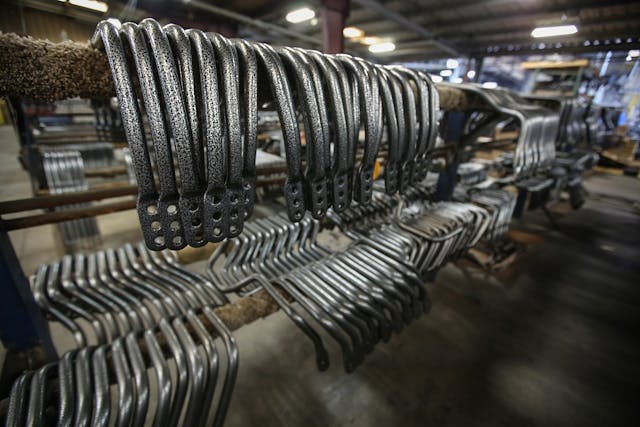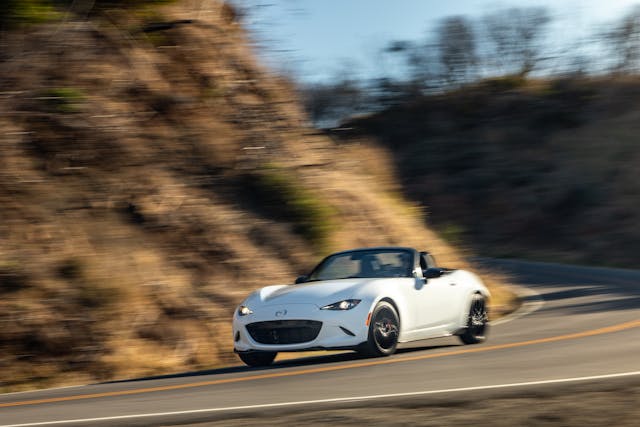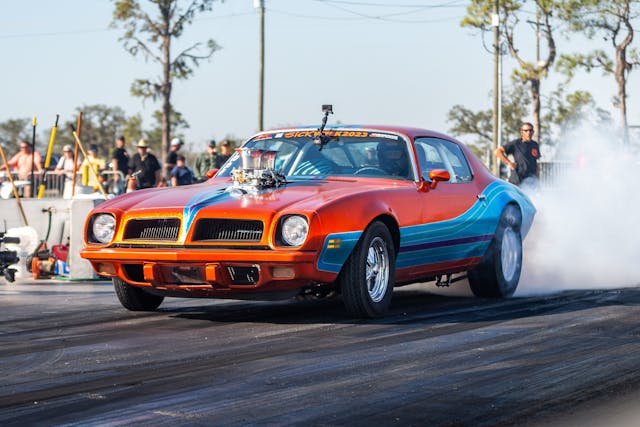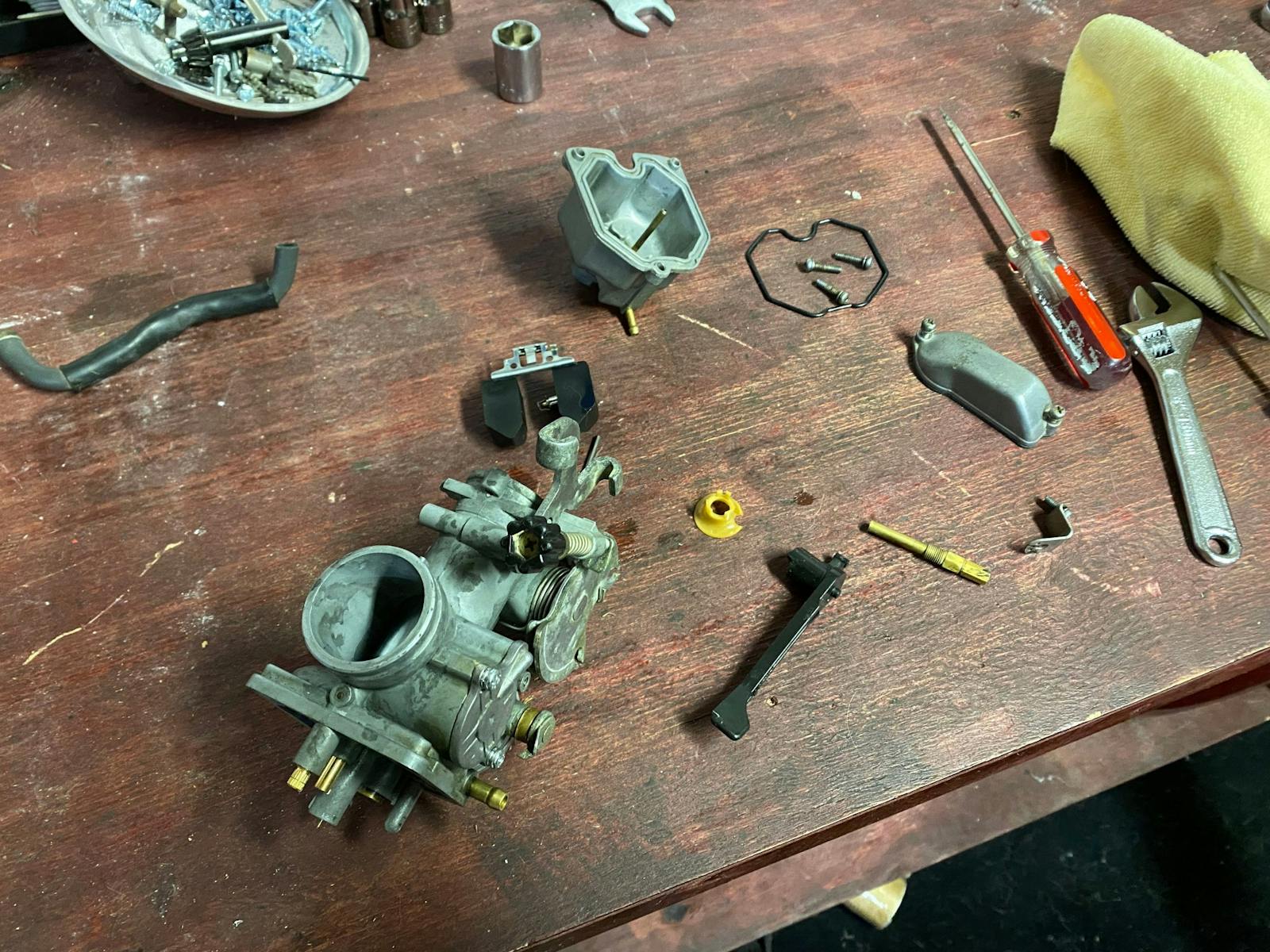10 automotive terms that muddy fact and fiction
This story originally ran on this site in November of 2019. It’s reproduced here, with minimal changes, as a riff on the same theme as this 2023 story examining the origins of the GMC name. That piece proved popular, telling us that you have an appetite for accuracy. Cheers to that! — Ed.
Considering how frequently I cringed during my decades as a technical editor at car magazines, it’s a wonder I didn’t develop a nervous tic. There’s a lot of misinformation and nonsense out there among non-experts who parrot certain phrases or terms, without really understanding what they mean. Here are my favorite cringe-worthy gaffes.
All-aluminum engines
I don’t believe any engine manufacturer has made a crankshaft out of aluminum. Same goes for piston rings, exhaust valves, and the fasteners tying everything together. I suspect this expression originated in England as lazy shorthand to describe an engine with an aluminum block and head(s).
Steel brakes
Brake rotors are made of cast iron or, in some cases, carbon-ceramic material which begins as a mix of carbon fibers bound with special resin. Cooking that blend for an extended period in a vacuum yields a ceramic material that’s excellent for stopping race cars and supercars. For more affordable cars, grey iron provides the best heat transfer while ductile iron’s higher strength is preferred for vented rotors. Motorcycles are a special case where stainless steel discs sacrifice some performance while avoiding unsightly rust caused by splashing through puddles.
Anti-sway or stabilizer bar

This transverse steel rod linked to your suspension system twists to resist body roll in turns. That’s why it’s most accurately called an anti-roll bar. Worried that you’d fret over your car tipping over, manufacturers coined meaningless alternative terms.
“Perfect” or “ideal” weight distribution
BMW and others would have you believe that 50:50 front-rear is the correct answer. Generally speaking, it’s not. Front-wheel-drive cars perform better with more than 50 percent of their weight carried by the front wheels and vice-versa for rear-wheel-drive rides. Cars with four-wheel drive have a more agile steering response with a rear bias. The ultimate balance depends on several factors: center of gravity height, polar moment of inertia, tire size stagger, and spring and damper rates, to cite a few. Supercars like Chevy’s mid-engine C8 Corvette, for example, typically carry roughly 65 percent of their weight on their rear tires to optimize acceleration, cornering, and braking performance.

Strength vs. Stiffness
Car parts that lack sufficient strength will fracture—as in actually crack or break in two. Ideally, that occurs only during severe collisions. Insufficient stiffness means that a suspension member, the body structure, or some other crucial part deflects too much under normal loading, impairing ride quality and handling precision. Every steering system component must be stiff to transport the subtle but useful feedback forces from the tire contact patches to the driver’s hands.
AWD vs. 4WD

This confusing construct was created to distinguish vehicles that employ four wheels for propulsion all the time from those with the means to manually engage a second drive axle when the road is slippery or non-existent. AWD can signify full-time four-wheel drive (such as most Audis and Subarus). Many modern AWD systems have intelligent controls that engage the second axle automatically and temporarily when slip is detected at the primary drive axle. Most AWD vehicles have a third center differential to accommodate the rotational speed differences that exist between the front and rear axles, though the extra diff isn’t needed with automatically engaging AWD.
4WD indicates part-time maximum traction (Jeep Wrangler), often used in vehicles where the driver can select 2WD or 4WD modes with a switch or a button. 4WD is a common feature of modern pickup trucks and heavy-duty SUVs.
Exemplary Aerodynamics
Carmakers love to tout low drag coefficient (Cd) figures to celebrate how readily their bullets pierce the wind. Lower is always better and any Cd below 0.30 is cause for popping a champagne cork. But before you begin swilling the bubbly, understand the rest of the equation. What really matters is drag area, the product of a car’s drag coefficient multiplied by its frontal area (CdA). In other words, a large slippery auto may perform no better than a tidier one with a higher drag coefficient.

Torque vs. Horsepower
This is an epic battle intensified by today’s onslaught of battery-electric cars. First, let’s distinguish between static and dynamic torques. Static torque is what you apply to your engine’s head bolts during a rebuild and is indicated by the dimensional units foot-pounds (or ft-lbs). To cinch the bolts at 100 ft-lbs, you apply 50 pounds of force to a two-foot-long wrench.
Dynamic torque is the rotating force that exits an engine’s crankshaft. The preferred units are pound-feet, lb-ft, or newton-meters if you’ve made the metric leap. When you see units misquoted as lb/ft by some witless writer, please pen a scathing letter to the editor.
Eighteenth-century inventor James Watt observed that a horse powering a sawmill needed one full minute to hoist a 33,000-pound load one foot upward. He defined that work as one horsepower. In his honor, the metric expression for work is kilowatt.

In the greater scheme of things, the amount of torque produced is proportional to the quantity of air flowing through the engine (or the size of an electric motor). The goal is maximum torque at the lowest rpm with the ability to sustain that output for as long as possible. The torque plot for a perfect engine or motor (none exist) would consist of a straight line from idle to the redline—the so-called “flat torque curve.”
Torque versus horsepower discussions inevitably devolve into a debate of which is better. The answer depends on your driving style. If you have an automatic transmission and you hesitate to downshift passing a car in traffic, you want right-now torque—the more the better. Any Tesla Model S or Chevy Bolt owner will spout chapter and verse about the instant torque they enjoy in daily driving. But if you’re a more aggressive driver who dwells at the upper half of the tachometer’s sweep, horsepower is your best friend. Your engine’s bottom range is merely for backing out of the garage. Your throttle is the trigger that unleashes more rpm and maximum power. Bottom line: torque is for painless tooling around, power is what gets you home in time for dinner.
Weight Transfer
Your car’s weight is a vector—a force proportional to its mass directed toward the center of the earth. Think W = mass x g, with g as the acceleration due to gravity. Your car’s mass permanently resides at its center of gravity (C of g), varying only in three specific instances. Its map coordinates change as you drive to work. And your car’s weight diminishes as you consume fuel or drop the kids off at school. During the body’s roll and pitch motion, the C of g also moves slightly from its static location.

What’s popularly (yet erroneously) known as weight transfer is more accurately described as load transfer. Drive around a corner and some of the load borne by the inside tires is “transferred” to the outboard tires. Step on the brake and the rear tires are unloaded while the front rubber is squished more firmly into the pavement. The opposite happens during acceleration. The amount of load transfer depends on the severity of the maneuver and the height of the car’s center of gravity which, as noted above, moves little during the tires’ tap dance on the pavement.
Where the rubber meets the road, dynamic forces point in three different directions. The share of the car’s weight a tire carries, diminished or augmented by load transfer, presses downward on the vertical axis. Increasing the vertical load applied to any tire increases traction—its ability to produce fore and aft and lateral forces. In the horizontal plane, the fore and aft axis represents the acceleration or braking force produced by the tire. Cornering forces reside in the horizontal plane on the lateral axis.

Venial sins of nomenclature
The term “crossover” was coined to describe a blend of car and truck components and traits. Like “wagon” and “SUV,” the crossover label has by now run out of gas. The same is true of import versus domestic ID tags. Given the car business’s world scope, distinguishing between a Ford Fiesta manufactured in Mexico and a Honda Accord made in Ohio is fruitless.
***
Check out the Hagerty Media homepage so you don’t miss a single story, or better yet, bookmark it. To get our best stories delivered right to your inbox, subscribe to our newsletters.



My pet peeve is the comparison of Muscle Car HP, pre-1972 to 1972 and on. SAE HP pre-1972 was measured at the flywheel. !972 and on it was measured at the rear wheels. My car, 1963, was advertised by the factory as 88 SAE HP and 75 DIN HP. Dividing the DIN HP by 1.0139 to get the current SAE HP shows it really has 74 HP using the current SAE HP protocol. It is much more accurate to compare HP ratings using the same protocol. Comparing flywheel HP on an old car to rear wheel HP on a new car is not meaningful.
Another term to address is “radio delete” which is commonly used with classic cars. Years ago most cars did not come standard with a radio-it was an option. So many are using the term as if it were an option, when in fact the radio was optional. I’ll use Corvette as an example. Radios were optional until the 1979 model year. Even heaters were optional in the early years. The following year, 1980, UL5 radio delete option was first used and that option continued for some years. So for cars that had optional radios it would be more accurate to call it a “no radio” car if it didn’t have one.
Cool article. Thanks.
So Crossover is not used any more? I liked it … it seemed to me it was a light duty “SUV” built on a car chassis whereas the SUV was a heavier duty, most likely built on a truck chassis.
Regarding Cd x frontal area (CdA) being the proper measure of aerodynamic efficiency, I remember Porsche 944 adverts that made the same point. And of course the Germans had a word for it – “Luftwiderstand.”
So typical of me. I can remember a single word I only saw once in the ‘80s, but I can’t remember why I walked into a room or that my glasses are perched on my head.
How about something as simple as motor versus engine- probably most of us at one time or another “said the motor in my vehicle” unless you are driving a EV – the other thing that comes to mind the total miss understanding of gapless piston rings
Ur killin me smalls!
Did my comment yesterday bring up this discussion of horse power and torque? I just threw out an old thought, without thinking
Further blurring the lines of AWD vs. 4WD are vehicles like the new Bronco, which can be ordered with an advanced 4WD that has AWD capability. The Badlands version, for example, has 4WD, front and rear lockers and a 4WD automatic mode that allows running in an all-wheel drive state on pavement. 4A allows power to any/all wheels like a typical AWD SUV, while 4H and 4L are available for off-road conditions. One could say it is both 4WD and AWD. 🙂
It really doesn’t make sense to discuss horsepower and torque independently. First, consider just what makes a car accelerate; it’s not torque or power per se, it’s force. You apply a force to the car, it accelerates. The bigger the mass, the smaller the acceleration. It’s Newton’s 1st law, F = ma.
This force is applied through the wheels. The surface of the tires applies a rearward force to the road; the road applies an equal and opposite force to the wheels (Newton’s third law). The other force applied to the car is friction, aerodynamic drag, applied to the car in the opposite direction. If the force on the wheels exactly equals drag, the car will not accelerate or decelerate. For simplicity, let’s just assume drag is zero, but it doesn’t matter for this illustration.
Where does this force come from? Again, let’s ignore losses through the drive train, transmission, etc. and just consider the wheels. It’s the torque at the wheels. The wheels are pushing on the road, parallel to the surface of the road, tangential to the wheels. This is perpendicular to the radius of the wheels, r, so the torque is simply F x r. Let’s just say that F is the total, combined force for all the wheels. So there you have it. Acceleration is directly proportional to torque, but remember, that’s at a particular speed. If the car’s going faster, but still maintains the same torque (it probably won’t) then it will keep accelerating at the same rate.
Now let’s talk about horsepower. Power is the work done in a given amount of time, or energy per unit time, or P = W/t. If you apply a constant force over a given distance, then the energy expended, the work, is W = F x d. Speed is the distance traveled for a given amount of time, t, or v = d/t. You put them together, you get P = F x v, it takes more power to accelerate at the same rate as you go faster.
You put all of this together again, and you can draw a few conclusions. If you have a constant, flat torque vs speed curve, you’ll accelerate at a constant rate, but need ever increasing horsepower, increasing linearly with speed. If you have constant horsepower, torque will drop off as speed increases and acceleration will too. In reality, neither torque or horsepower will remain constant with speed, but they will always be interrelated in this way.
SAE J1952, originally issued in 1991, defines AWD as consisting of “a means to distribute torque to all axles of a vehicle.” In other words, 4WD, 4×4, 6×6, etc. are all AWDs. J1952 further defines a “Full-Time AWD” as one with a center differential, a “Part-Time AWD” as one requiring driver intervention to engage (typically referred to as a 4×4 in the US), and an “On-Demand AWD” as one driving the secondary axle via an active or passive coupling device. It is common in Europe to refer to your on-demand AWD passenger car as a “4WD” or “4×4.” Unfortunately the marketing folks have far more reach than SAE and they like to try and generate their own brand names (“ControlTrac,” “Quadra-Trac,” “Super Handling AWD,” etc.) so there will likely never be standardized terminology on this, but SAE did make the effort to address it a long time ago.
You nailed it! Thank you!!
I think the biggest issue with AWD and 4WD is too many people forget it does nothing to help you brake. I did have some dummy who would leave his 4WD Tahoe in 4WD and then complain about the binding it would do in low speed parking lot maneuvers. We told him to turn it off or risk breaking something.
Right on, Gary. Living in Canada and experiencing plenty of winter weather, this ubiquitous overconfidence that you can somehow brake better in a 4WD vehicle has humbled many.
Also, these drivers can’t ignore the extra momentum p=mv with the typical increase of mass in a 4WD system.
Not to mention the typical higher centre of gravity coming into play,,,
I think a few of these are kind of nit-picking a semantic, more than an incorrect use of terminology. “Weight transfer”, versus “load transfer”…what do load gauges measure? Weight. As far as the “anti-roll” bar, well they do reduce the perceived sway of the body, and stabilize the effect of weight transfer…I mean load transfer. LOL
Mathematical rules, formulae and other calculations aside:
In layman terms, the “feel” of low RPM power is torque.
Horsepower is accelerative “feel”at higher RPM.
Diesels typically have great torque but not much horsepower. The engine in any 18-wheeler is a good example.
Contrast that to a super-car’s normally-aspirated gasoline engine, such as a Ferrari V12. I own an 812 Superfast. It produces just shy of 800 hp, but you have to be well into the rev range to get it. It won’t pull a trailer very well.
F1 engines are the ultimate example of this ultra-high-horsepower (and not much torque) formula.
Electric motors generate maximum horsepower and torque at 1 RPM.
Put gasoline and electric powerplants together in the right manner, and you can get something with magical torque and horsepower…like the Ferrari SF90.
Definitely not true, An electric motor produces zero horsepower at 0 RPM. Linearly increases till it goes into field reduction mode, when it is in constant horsepower mode. This is only true if it is not a permanent magnet motor. Then it is linear until it reaches its maximum RPM limit. Sometimes electric motors are allowed to overpower the motor at lower RPMs knowing that they will not overheat the windings. But all electric motors by definition produce zero HP at zero RPM.
Read closer: I did NOT write 0 RPM. I wrote 1 RPM.
A proper high-output electric motor will be producing max output at 1 RPM.
In the old days (I don’t see it happening much any more) I would laugh whenever I read a car magazine’s (or car company’s) tech info and it said the electric motor produces XXX hp/torque at 0 RPM.
Really? At Zero RPM, the thing is off.
This is a real Joule of an article…Watts that you say? You don’t like my pun? Puns are fun. I really enjoyed this article on terminology and as a retired electronics tech, I was sort of professionally required to carry the torch for using the right words for things because it really does matter. Communicating accurately helps get things done efficiently and saves a lot of wasted motion and useless talk. When people use the right words in the wrong way or cannot spell, or name the gaff here, its just annoying and gets in the way of understanding what information is being conveyed. When I encounter folks like that I attempt to disengage as quickly as possible before I say something that will get me in trouble. 😉
Electronic techs will usually get into baseless arguments over transistors.
Sorry I am just biased that way.
Nice!
torque makes you go quick and horse power makes you go fast